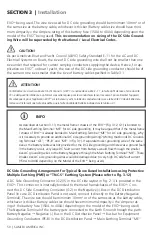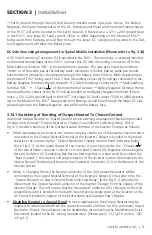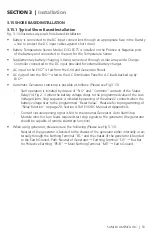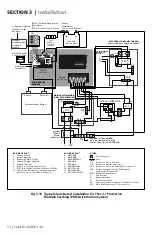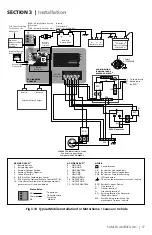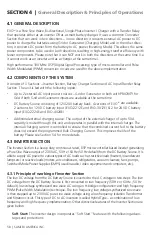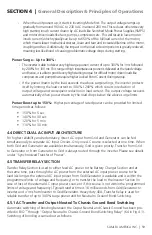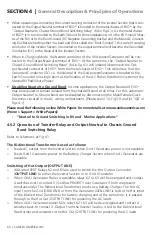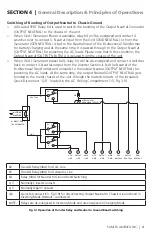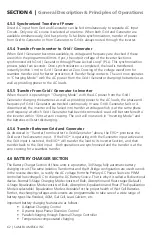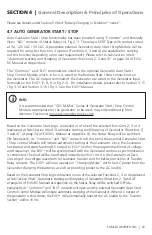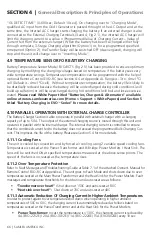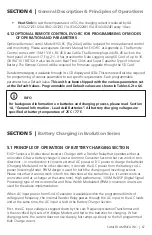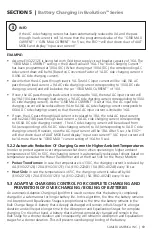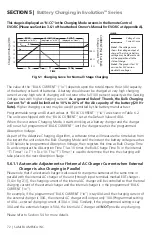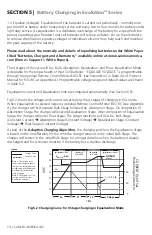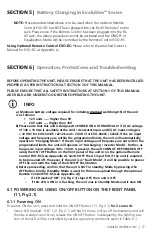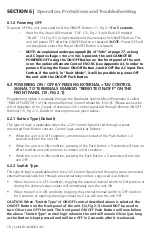
64 | SAMLEX AMErICA INC.
4.8 MoDeS oF oPerAtion
4.8.1 Charging Mode
As long as the external AC input power from the Grid/Generator is available and is within the
programmed limits of voltage and frequency, it is passed through to the AC load through the
Transfer relay Section. At the same time, the battery Charger Section converts the external AC
input power from the Grid/Generator to DC power to charge the DC battery Source.
4.8.2 inverting Mode
If at any instant, the external AC input power from the Grid/Generator is interrupted or is not
within the programmed limits of voltage and frequency, the Transfer relay is de-energized and
the load is transferred to the Inverter Section and internal battery charging is terminated. This is
called the Inverting Mode.
4.8.3 Power Saving Mode
When the unit is operating without any load connected to it, it requires some minimum input power
from the battery to keep all the sections inside the unit alive and ready to deliver power to the AC
load as soon as the load is switched on. This power is called the “No Load Power Draw” or the “Idle
Power” or “Self Power Consumption”. The “No Load Power Draw” of these units in the Normal
Mode is around 25W to 30W. The EVO
TM
has a provision to minimize this “No Load Power Draw”,
if required (Applicable only when the unit is in “Inverter Mode”). This is achieved by enabling the
“Power Saving Mode”.
the unit is shipped in default “Disabled” condition i.e. Power Saving
Mode will be not active.
Optional remote Control EVO-rC (see Appendix A) is required to dis-
able this mode. When this mode is enabled, the unit does not provide continuous output power. A
pulsing output power consisting of only 3 cycles of reduced 48 VAC output voltage that are made
available every 0.5 seconds is used to sense if a minimum load is present or not.
As continuous
power is not being supplied, the “no Load Power Draw” is reduced to less than 8w.
If a
load greater than the programmed value of “Wake-up Point” is sensed, the unit exits Power Save
Mode and starts providing normal continuous output power. If the load drops to the programmed
value of “Enter Point”, the unit once again reverts to Power Saving Mode. Programmable and
Default Values of “Enter Point” and “Wake-up Point” are shown in Table 6.6. further details are
available in the Owners Manual for the remote Control EVO-rC (See Appendix A).
Power Saving Mode should be disabled for the following loads:
Low power loads that draw < 5W e.g. digital clocks, satellite receivers, phones / answering
machines etc.
Audio / video / computing devices that consume normal operating power > 50 W but draw less than
5W on entering Sleep Mode when switched off or when no activity is seen for a specified time.
4.8.4 Power Saving Mode - transfer Characteristics in grid / generator Mode
•
transfer from grid / generator to inverter:
If qualified Grid or Generator AC input
power is available (its voltage and frequency are within the programmed range), the
Transfer relay remains energized and the AC input power is passed through to the
load and at the same time, the unit operates as a battery charger. If AC input power
from Grid / Generator fails or is not qualified (its voltage and frequency are not within
the programmed range), the Transfer relay is de-energized and the load is transferred
to the inverter. When this transfer takes place, the inverter initially operates in Normal
Mode. If the AC load was greater than the programmed value of “Wake-up Point”,
the inverter continues in Normal Mode. However, if it sees a load less than the
programmed value of “Enter Point” for around 5 sec, it enters Power Saving Mode.
SECTIOn 4 |
general Description & Principles of Operations

